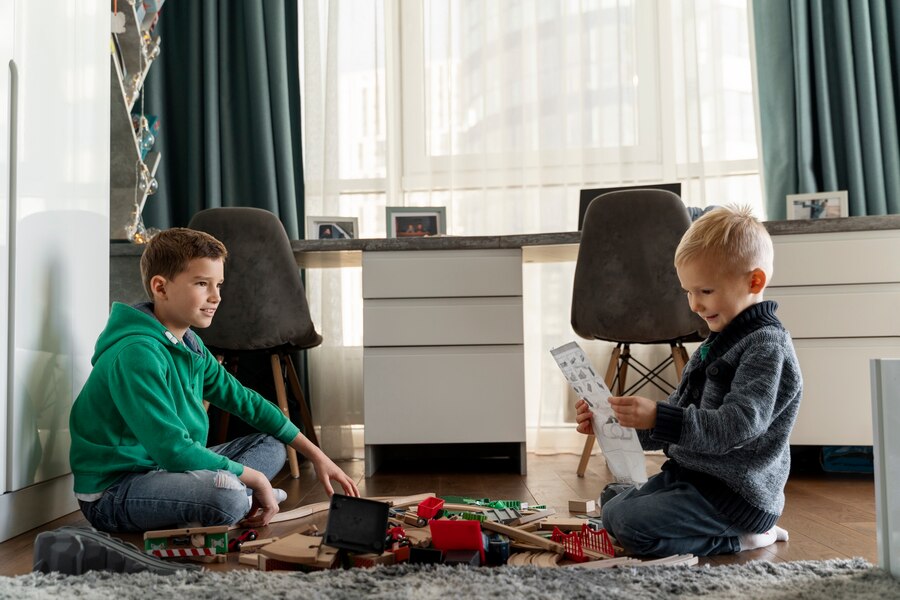At Love2Learn Early Learning Center in Mechanicsburg, PA, we know that play is the foundation for learning in early childhood. One of the most impactful types of play is dramatic play, a form of pretend play where children take on different roles, act out scenarios, and explore their world through imagination. This type of play might look like simple fun, but it’s essential for building key developmental skills that set the stage for a lifetime of learning.
What is Dramatic Play?
Dramatic play is a type of play in which children engage in imaginative role-playing. They might act out scenarios from their everyday lives, such as cooking a meal, going to the store, or running a coffee shop. At Love2Learn, we change our dramatic play themes monthly to align with our curriculum, which keeps things fresh and exciting! This month, our children have loved raking leaf piles and working at our pumpkin patch, while next month, they’ll be exploring a cozy coffee shop and a Native American teepee.
The Developmental Benefits of Dramatic Play
Dramatic play isn’t just about fun—it provides a powerful way for young children to build foundational skills. Here are just a few of the benefits children gain from engaging in dramatic play:
- Cognitive Development and Problem-Solving Skills
When children pretend to be different characters or scenarios, they engage in problem-solving. For example, figuring out how to “run” a coffee shop teaches them sequencing, planning, and organization—all skills they’ll use throughout their lives.
- Social and Emotional Growth
Dramatic play encourages children to see the world from others’ perspectives, which nurtures empathy. By acting out roles with friends, they learn cooperation, turn-taking, and communication skills, all of which are crucial for emotional intelligence.
- Language and Literacy
During dramatic play, children often use language to express ideas, negotiate roles, and communicate scenarios. Whether taking a customer’s “order” or pretending to “rake leaves,” they expand their vocabulary, improve sentence structure, and develop early literacy skills.
- Creativity and Imagination
Creative thinking is central to dramatic play. Taking on different roles encourages children to think beyond their immediate environment, expanding their creativity in a natural and engaging way.
How We Bring Dramatic Play to Life at Love2Learn
Our changing themes at Love2Learn are designed to immerse children in a new, imaginative environment every month. By offering different play scenarios, such as our seasonal pumpkin patches or upcoming coffee shop and teepee setup, we encourage curiosity and excitement in learning. These setups tie into our monthly curriculum themes, allowing children to explore and deepen their understanding of the world around them.
Dramatic play at Love2Learn Early Learning Center is more than just make-believe—it’s a journey of discovery, skill-building, and, most importantly, joy! By cultivating these rich, imaginative play experiences, we help children build the confidence and competence they need to thrive.


